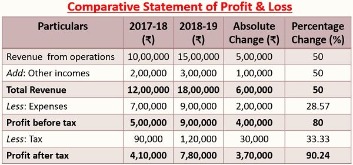
To correct transactions that have already been reconciled, locate the transaction in question and remove the reconciliation marker, such as a checkmark, to un-reconcile it. Then, make the necessary changes to ensure the transaction details accurately reflect the actual transaction. Adjusting entries may be necessary to correct these discrepancies, particularly in cases of bank errors or charges and fees not recorded in QuickBooks. Also, consider dividends account timing differences, such as checks that have been issued but not yet cashed, or bank fees that have yet to be recorded in QuickBooks. Once the matching is complete, and the difference between your bank statement and QuickBooks Desktop shows $0.00, proceed to finalize the reconciliation by selecting Reconcile now. After completing the reconciliation, you have the option to display or print the Reconciliation report for record-keeping.
Step 3. Check missing or duplicate transactions
Sometimes users make a reconciliation adjustment to force an account in QuickBooks to match their bank records. You shouldn’t do a reconciliation adjustment without your accountant’s guidance. And if you fix the errors later on, an adjustment causes problems down the road. For a more hands-off reconciliation experience, QuickBooks can help. We offer reconciliation reports, discrepancy identification, and live accountants to work with for ease and confidence when closing your books. If not, you’re most likely looking at an error in your books (or a bank error, which is less likely but possible).
- To resolve these issues, add any transactions that are missing in QuickBooks, delete or merge any duplicate entries, and correct the amounts for transactions that have been inaccurately recorded.
- Sign up for Synder today or book a seat at a Weekly Public Demo to experience firsthand how Synder automates bookkeeping and accounting tasks for online transactions.
- You can be more confident that accounts will be up to date and accurate.
- It ensures that QuickBooks entries align with those in your bank and credit card account statements.
How to Reconcile in QuickBooks Desktop

This process confirms the completeness of the books and signifies their readiness for monthly closure. In cases where discrepancies arise, the bookkeeper may have to how when and why do you prepare closing entries redo the reconciliation to rectify errors. Like in QuickBooks Desktop, bank reconciliation for your business accounting in QuickBooks Online is a separate event.
Mark Calatrava

If a transaction appears in QuickBooks Online but not on your statement, do not mark it. For any discrepancies, like a slight mismatch in payee details, simply edit the transaction in QuickBooks Online to align it with your bank statement. The goal is to have a zero difference between your statement and QuickBooks Online by the end of the process, at which point you can select Finish now. Reconciliation is an accounting process used to ensure that two sets of records (usually the balances of two accounts) are in agreement. It is a key step in establishing the accuracy of financial records and is often used to compare the records of a company with external records such as bank statements.
You’ll also notice on the screen that there’s a Modify button, which allows you to change the amounts you entered in Step 1. Discover key regulations, tax insights, and tips for success in the Aloha State’s unique market. It helps you know the true, up-to-date value of your business. It can also help with account audits and tax preparation by catching errors early.
Once your statement is generated just click reconcile and you will have it all done. (If you’re in the middle of reconciling, stay on the page you’re on and skip to step 4). Reconciling is simple but it requires you to focus and do one step at a time.
Click Save & Close, and the transaction is added to the reconciliation screen. From your QuickBooks Desktop dashboard, click Banking from the top menu bar and then select the Reconcile dropdown. Another option is to Click on the Reconcile icon under the Banking menu of your QuickBooks Desktop homepage.
A monthly reconciliation helps to catch and identify any unusual transactions that might be caused by fraud or accounting errors, especially if your business uses more than one bank account. Finally, you need to make sure that all transactions match the bank statement and re-run the reconciliation report for confirmation. Connect QuickBooks to your bank, credit cards, PayPal, Square, and more1 and we’ll import your transactions for you. When you receive your bank statement or account statement at the end of the month, you’ll only spend a minute or two reconciling your accounts. QuickBooks organizes your data for you, making bank reconciliation easy. It is commonly used in banking (to reconcile a checkbook with a bank statement), in businesses (to reconcile revenue or expenses), and in personal finance management.
Learn about payment processing, POS systems, and how to choose. If you need to take control of your business finances, we’ve compiled 6 good reasons to sync up your accounting software so you can focus on growth. Once connected, all 5 5 cost-volume-profit analysis in planning managerial accounting bills in QuickBooks Online will sync in real-time with Wise. Bill payments are automatically synced, matched, and categorized in QuickBooks. Frequent reconciliation is important to ensure your QuickBooks accounts remain accurate.
Different amounts occur when a transaction is recorded in QuickBooks with a different amount from that shown on the bank statement. Examples may include entry errors or currency conversion problems, etc. Suppose you receive a payment of $500 but put it by mistake into QuickBooks as $50; this discrepancy will then lead to inaccuracies. These are transactions that are on your bank statement but not in QuickBooks, either because you’ve missed recording a transaction or sometimes the bank makes some error. For instance, when a payment of $150 to any supplier is on your bank statement but wasn’t recorded in QuickBooks, that presents a disparity. Imagine that you open your QuickBooks Online ledger and find a transfer recorded several times.
